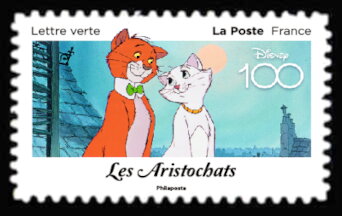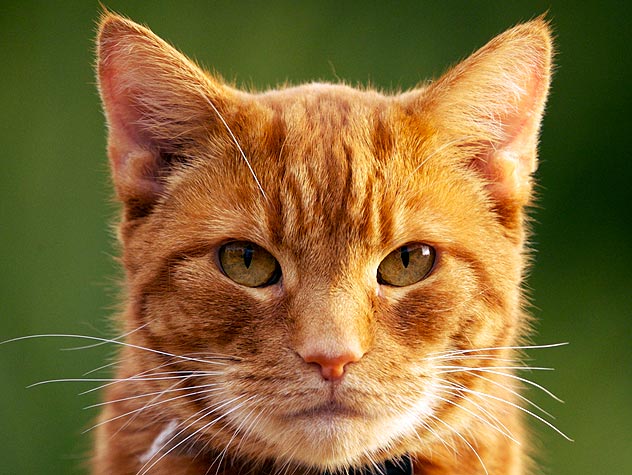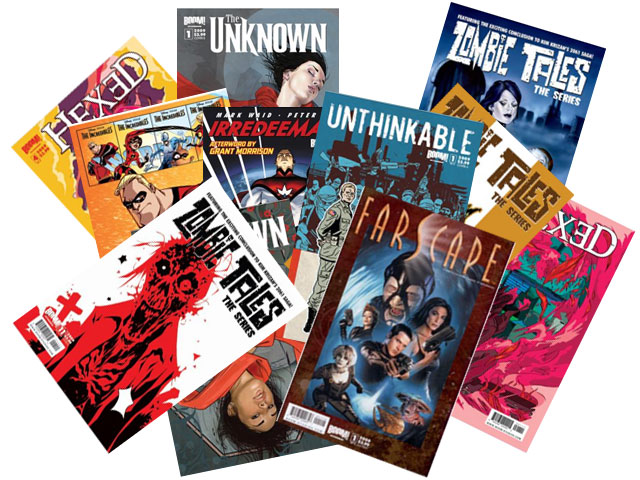Stamp: The Aristocats (France 2023)
The Aristocats (France 2023)
04 September (France ) within release Walt Disney, Centenary : Disney Films (2023) goes into circulation Stamp The Aristocats face value Lettre No Face Value
| Stamp The Aristocats in catalogues | |
|---|---|
| Colnect codes: | Col: FR 2023.09.04-03h |
Stamp is horizontal format.
Stamp from booklet. Face value € 1.16 on day of issueAlso in the issue Walt Disney, Centenary : Disney Films (2023):
- Stamp - Beauty and the Beast face value Lettre;
- Stamp - Cinderella face value Lettre;
- Stamp - Frozen face value Lettre;
- Stamp - Lady and the Tramp face value Lettre;
- Stamp - Peter Pan face value Lettre;
- Stamp - Pocahontas face value Lettre;
- Stamp - Ratatouille face value Lettre;
- Stamp - Snow White and the Seven Dwarfs face value Lettre;
- Stamp - The Aristocats face value Lettre;
- Stamp - The Jungle Book face value Lettre;
- Stamp - The Lion King face value Lettre;
- Stamp - The Little Mermaid face value Lettre;
- Booklet - Walt Disney, Centenary : Disney Films face value 12*Lettre;
Stamp The Aristocats it reflects the thematic directions:
An anniversary is the date on which an event took place or an institution was founded in a previous year, and may also refer to the commemoration or celebration of that event. For example, the first event is the initial occurrence or, if planned, the inaugural of the event. One year later would be the first anniversary of that event. The word was first used for Catholic feasts to commemorate saints. Most countries celebrate national anniversaries, typically called national days. These could be the date of independence of the nation or the adoption of a new constitution or form of government. The important dates in a sitting monarch's reign may also be commemorated, an event often referred to as a "Jubilee".
A cartoon is a type of visual art that is typically drawn, frequently animated, in an unrealistic or semi-realistic style. The specific meaning has evolved, but the modern usage usually refers to either: an image or series of images intended for satire, caricature, or humor; or a motion picture that relies on a sequence of illustrations for its animation. Someone who creates cartoons in the first sense is called a cartoonist, and in the second sense they are usually called an animator.
The concept originated in the Middle Ages, and first described a preparatory drawing for a piece of art, such as a painting, fresco, tapestry, or stained glass window. In the 19th century, beginning in Punch magazine in 1843, cartoon came to refer – ironically at first – to humorous artworks in magazines and newspapers. Then it also was used for political cartoons and comic strips. When the medium developed, in the early 20th century, it began to refer to animated films that resembled print cartoons.
The domestic cat (Latin: Felis catus) is a small, typically furry, carnivorous mammal. They are often called house cats when kept as indoor pets or simply cats when there is no need to distinguish them from other felids and felines. Cats are often valued by humans for companionship and for their ability to hunt vermin. There are more than 70 cat breeds, though different associations proclaim different numbers according to their standards.
Cats are similar in anatomy to the other felids, with a strong flexible body, quick reflexes, sharp retractable claws, and teeth adapted to killing small prey. Cat senses fit a crepuscular and predatory ecological niche. Cats can hear sounds too faint or too high in frequency for human ears, such as those made by mice and other small animals. They can see in near darkness. Like most other mammals, cats have poorer color vision and a better sense of smell than humans. Cats, despite being solitary hunters, are a social species and cat communication includes the use of a variety of vocalizations (mewing, purring, trilling, hissing, growling, and grunting), as well as cat pheromones and types of cat-specific body language.
Comics are a medium used to express ideas with images, often combined with text or other visual information. It typically takes the form of a sequence of panels of images. Textual devices such as speech balloons, captions, and onomatopoeia can indicate dialogue, narration, sound effects, or other information. There is no consensus among theorists and historians on a definition of comics; some emphasize the combination of images and text, some sequentiality or other image relations, and others historical aspects such as mass reproduction or the use of recurring characters. Cartooning and other forms of illustration are the most common image-making means in comics; Photo comics is a form that uses photographic images. Common forms include comic strips, editorial and gag cartoons, and comic books. Since the late 20th century, bound volumes such as graphic novels, comic albums, and tankōbon have become increasingly common, along with webcomics as well as scientific/medical comics
The Walt Disney Company, commonly known as Disney (/ˈdɪzni/ DIZ-nee),[ is an American multinational mass media and entertainment conglomerate that is headquartered at the Walt Disney Studios complex in Burbank, California. Disney was founded on October 16, 1923, by brothers Walt Disney and Roy Disney as Disney Brothers Studio; it also operated under the names Walt Disney Studio and Walt Disney Productions before changing its name to the Walt Disney Company in 1986. In 1928, Disney established itself as a leader in the animation industry with the short film Steamboat Willie. The film used synchronized sound to become the first post-produced sound cartoon, and popularized Mickey Mouse, who became Disney's mascot and corporate icon.
A film (British English) – also called a movie (American English), motion picture, moving picture, picture, photoplay or (slang) flick – is a work of visual art that simulates experiences and otherwise communicates ideas, stories, perceptions, feelings, beauty, or atmosphere through the use of moving images. These images are generally accompanied by sound and, more rarely, other sensory stimulations. The word "cinema", short for cinematography, is often used to refer to filmmaking and the film industry, and the art form that is the result of it. form that is the result of it.






